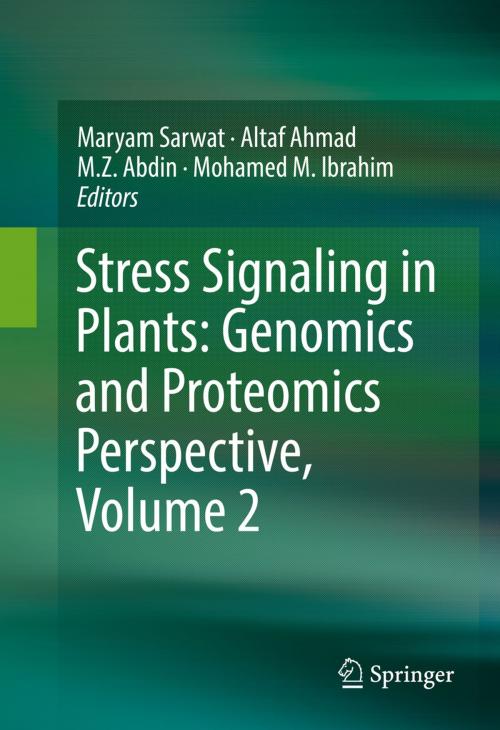Stress Signaling in Plants: Genomics and Proteomics Perspective, Volume 2
Nonfiction, Science & Nature, Science, Biological Sciences, Cytology, Biochemistry| Author: | ISBN: | 9783319421834 | |
| Publisher: | Springer International Publishing | Publication: | December 28, 2016 |
| Imprint: | Springer | Language: | English |
| Author: | |
| ISBN: | 9783319421834 |
| Publisher: | Springer International Publishing |
| Publication: | December 28, 2016 |
| Imprint: | Springer |
| Language: | English |
This two-volume set takes an in-depth look at stress signaling in plants from a uniquely genomic and proteomic perspective and offers a comprehensive treatise that covers all of the signaling pathways and mechanisms that have been researched so far. Currently, plant diseases, extreme weather caused by climate change, drought and an increase in metals in soil are amongst the major limiting factors of crop production worldwide. They devastate not only the food supply but also the economy of a nation. With global food scarcity in mind, there is an urgent need to develop crop plants with increased stress tolerance so as to meet the global food demands and to preserve the quality of our planet. In order to do this, it is necessary to understand how plants react and adapt to stress from the genomic and proteomic perspective. Plants adapt to stress conditions by activating cascades of molecular mechanisms, which result in alterations in gene expression and synthesis of protective proteins. From the perception of the stimulus to the transduction of the signal, followed by an appropriate cellular response, the plants employ a complex network of primary and secondary messenger molecules. Cells exercise a large number of noticeably distinct signaling pathways to regulate their activity. In order to contend with different environmental adversities, plants have developed a series of mechanisms at the physiological, cellular and molecular levels that respond to stress. Each chapter in this volume provides an in-depth explanation of what we currently know of a particular aspect of stress signaling and where we are heading. Together with the highly successful first volume, Stress Signaling in Plants: Genomics and Proteomics Perspective, Volume 2 covers an important aspect of plant biology for both students and seasoned researchers.
This two-volume set takes an in-depth look at stress signaling in plants from a uniquely genomic and proteomic perspective and offers a comprehensive treatise that covers all of the signaling pathways and mechanisms that have been researched so far. Currently, plant diseases, extreme weather caused by climate change, drought and an increase in metals in soil are amongst the major limiting factors of crop production worldwide. They devastate not only the food supply but also the economy of a nation. With global food scarcity in mind, there is an urgent need to develop crop plants with increased stress tolerance so as to meet the global food demands and to preserve the quality of our planet. In order to do this, it is necessary to understand how plants react and adapt to stress from the genomic and proteomic perspective. Plants adapt to stress conditions by activating cascades of molecular mechanisms, which result in alterations in gene expression and synthesis of protective proteins. From the perception of the stimulus to the transduction of the signal, followed by an appropriate cellular response, the plants employ a complex network of primary and secondary messenger molecules. Cells exercise a large number of noticeably distinct signaling pathways to regulate their activity. In order to contend with different environmental adversities, plants have developed a series of mechanisms at the physiological, cellular and molecular levels that respond to stress. Each chapter in this volume provides an in-depth explanation of what we currently know of a particular aspect of stress signaling and where we are heading. Together with the highly successful first volume, Stress Signaling in Plants: Genomics and Proteomics Perspective, Volume 2 covers an important aspect of plant biology for both students and seasoned researchers.















